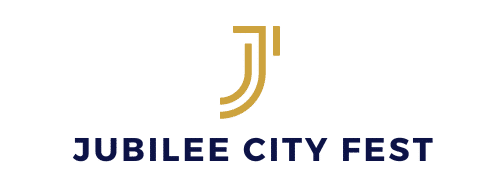How Does the Practice of Urban Foraging Contribute to Food Security and Nutrition?

When you hear the term "foraging," what comes to mind? Most likely, you envision a landscape of untamed wilderness, far removed from the hustle and bustle of urban life. However, a growing number of city-dwelling scholars are challenging this perception, exploring the vast potential of urban foraging as a means to improve food security and nutrition in our increasingly dense cities. By harnessing the power of diversity, these modern-day foragers are uncovering a wealth of edible species right under our noses, from wild vegetables to other lesser-known foods.
The Concept of Urban Foraging
Urban foraging may seem like a novel concept, but it’s a practice steeped in human history. Long before the advent of supermarkets and convenience stores, our ancestors relied on foraging as a primary means for food acquisition. Even in bustling cityscapes, there are abundant opportunities for foraging. In fact, many of your local public spaces are home to a variety of wild species that can supplement your diet.
Lire également : What Are the Potential Benefits of Low-Level Laser Therapy in Wound Healing?
Foraging in an urban context does require a different skill set than traditional wilderness foraging. It necessitates an understanding of urban ecosystems, the ability to identify a broad range of edible species, and knowledge about safe and ethical harvesting practices. At its core, urban foraging is about tapping into local resources and fostering a deeper connection with the natural world around us.
Urban Foraging and Food Security
Food security is of paramount concern in our modern world, especially in urban environments where access to fresh, nutritious food can often be limited. Urban foraging presents a viable solution to this issue by encouraging consumption of locally-available, free, and often under-utilized foods. It’s about leveraging the edible diversity our cities have to offer and, in doing so, reducing reliance on long and complex food supply chains.
Dans le meme genre : How Does Engaging in Community Theater Productions Enhance Cognitive Function?
For instance, one single city park can host a wide array of edible species, including but not limited to, various species of berries, nuts, mushrooms, and leafy greens. With a little knowledge and a keen eye, urban residents can forage for these foods, thereby supplementing their dietary needs, increasing their intake of fresh, unprocessed foods, and improving overall food resilience in the face of potential supply disruptions.
Mapping Edible Landscapes with Google and Crossref
To aid in the process of urban foraging, technological tools like Google and Crossref can be incredibly valuable. By using Google Earth and Google Maps, foragers can scout out potential foraging sites, map out routes, and even pinpoint the locations of specific edible species in their city. Additionally, Google’s powerful search engine can provide a wealth of information on identifying, harvesting, and preparing wild foods.
Crossref, on the other hand, is a digital resource that allows researchers and the public alike to access a vast array of scientific publications. For urban foragers, this can be invaluable, enabling access to studies on local ecosystems, potential health benefits of wild foods, and more. As such, these digital tools can play a crucial role in promoting urban foraging and helping city dwellers tap into the nutritional potential lurking in their local landscapes.
Urban Foraging and Public Perception
However, it is important to acknowledge the challenges that urban foraging faces. One of the biggest hurdles is the public’s perception. Despite the clear potential that urban foraging has for improving food security and nutrition, many people still view it as a fringe activity or even as a form of trespassing. Changing these perceptions is crucial for the widespread adoption of urban foraging.
Educational initiatives can play a key role in this. For instance, workshops and guided foraging tours can help people learn about the local species in their area and how to sustainably harvest them. Public figures and influencers can also play a role in shifting perceptions by engaging in and promoting urban foraging activities. Additionally, urban foraging needs to be promoted in a way that respects local laws and regulations, as well as the rights of property owners.
The Dietary Value of Urban Foraging
Given the right approach, urban foraging can offer significant dietary benefits. Wild foods contain a variety of nutrients often lacking in our modern diets. They can be particularly rich in dietary fiber, vitamins, and minerals. Moreover, many wild foods are lower in calories and sugars compared to their cultivated counterparts, making them a healthier choice.
Data from numerous studies support these values. For instance, a study published in the Journal of Ethnobiology and Ethnomedicine found that wild foods can significantly contribute to dietary diversity and micronutrient intake. Furthermore, the practice of urban foraging can also promote physical activity and mental wellbeing, contributing to overall health.
Urban foraging, thus, offers a promising avenue to improve food security and nutrition. By harnessing the bounty of our cities and embracing the diversity of edible species, we can foster resilience, better health, and a deeper connection with our local environments.
Urban Foraging as a Catalyst for Urban Agriculture
Urban foraging can serve as a catalyst for the growth of urban agriculture. It can lead to the cultivation and propagation of edible species in public and private spaces, thereby contributing to the green version of urban areas. For instance, in South Africa, an increasing number of urban dwellers are turning vacant lots and backyards into productive green spaces, growing a variety of edible species found during their foraging expeditions.
Urban agriculture not only supplements the diet of urban residents with fresh, local produce but also helps to improve food security by reducing the reliance on imported food. This practice of growing food in urban areas can be seen as an extension of urban foraging, where the bounty of the land is not just harvested but also nurtured and propagated.
Moreover, urban foraging and urban agriculture can work in synergy. The knowledge gained from foraging activities about local edible species, their growth conditions, and seasonal availability can be utilized in planning and managing urban agriculture initiatives. Similarly, these initiatives can create more habitats for wild edibles, enhancing the opportunities for urban foraging.
Additionally, by encouraging people to engage in urban farming and foraging, it can foster a stronger sense of community and stewardship towards urban green spaces. It can also provide educational opportunities about the importance of dietary diversity, nutrition, and food security.
Urban Foraging as a Solution to Food Insecurity
Urban foraging has the potential to address food insecurity, a pressing issue in many urban areas. Food insecurity is characterized by a lack of access to sufficient, nutritious food for a healthy and active life. It is often a result of poverty and lack of access to food due to geographical or socio-economic barriers.
Urban foraging can help mitigate food insecurity by providing access to a variety of nutritious wild foods. Wild edibles, as discussed earlier, are rich in essential nutrients often lacking in processed foods that dominate the diets in urban areas. By supplementing diets with wild foods, urban foraging can help improve the nutritional status of urban dwellers.
Moreover, urban foraging is not just about physical nourishment but also about fostering resilience. It equips individuals with the skills and knowledge to identify and utilize the food resources available in their local environment. This practice can be particularly empowering for low-income individuals and communities who are most affected by food insecurity.
A 2020 study in the South African city of Durban, for instance, found that urban foraging activities significantly contributed to the food security of low-income households. The study, available on Scholar Crossref, highlighted the role of urban foraging in enhancing dietary diversity, providing access to nutritious food, and promoting self-reliance in food procurement.
Conclusion: Embracing the Potential of Urban Foraging
To conclude, urban foraging offers a promising, sustainable, and innovative approach to address food security and improve nutrition in urban settings. By tapping into the wealth of edible species in our cities, we can promote dietary diversity, enhance food resilience, and empower individuals and communities.
However, harnessing the full potential of urban foraging calls for a shift in perception. It requires us to see our urban landscapes not just as concrete jungles, but as bountiful edible ecosystems. It requires us to see urban foraging not just as an antiquated survival skill, but as a relevant and valuable practice in our modern, urbanized world.
Therefore, it’s crucial to foster public awareness and appreciation of urban foraging. Educational initiatives, technological tools like Google Scholar, and policy support can play instrumental roles in promoting urban foraging.
In a world grappling with increasing urbanization, climate change, and food insecurity, urban foraging offers a ray of hope. It reminds us that solutions to our most pressing problems might just be growing under our feet. And all we need to do is look down, recognize, and harness this potential.
